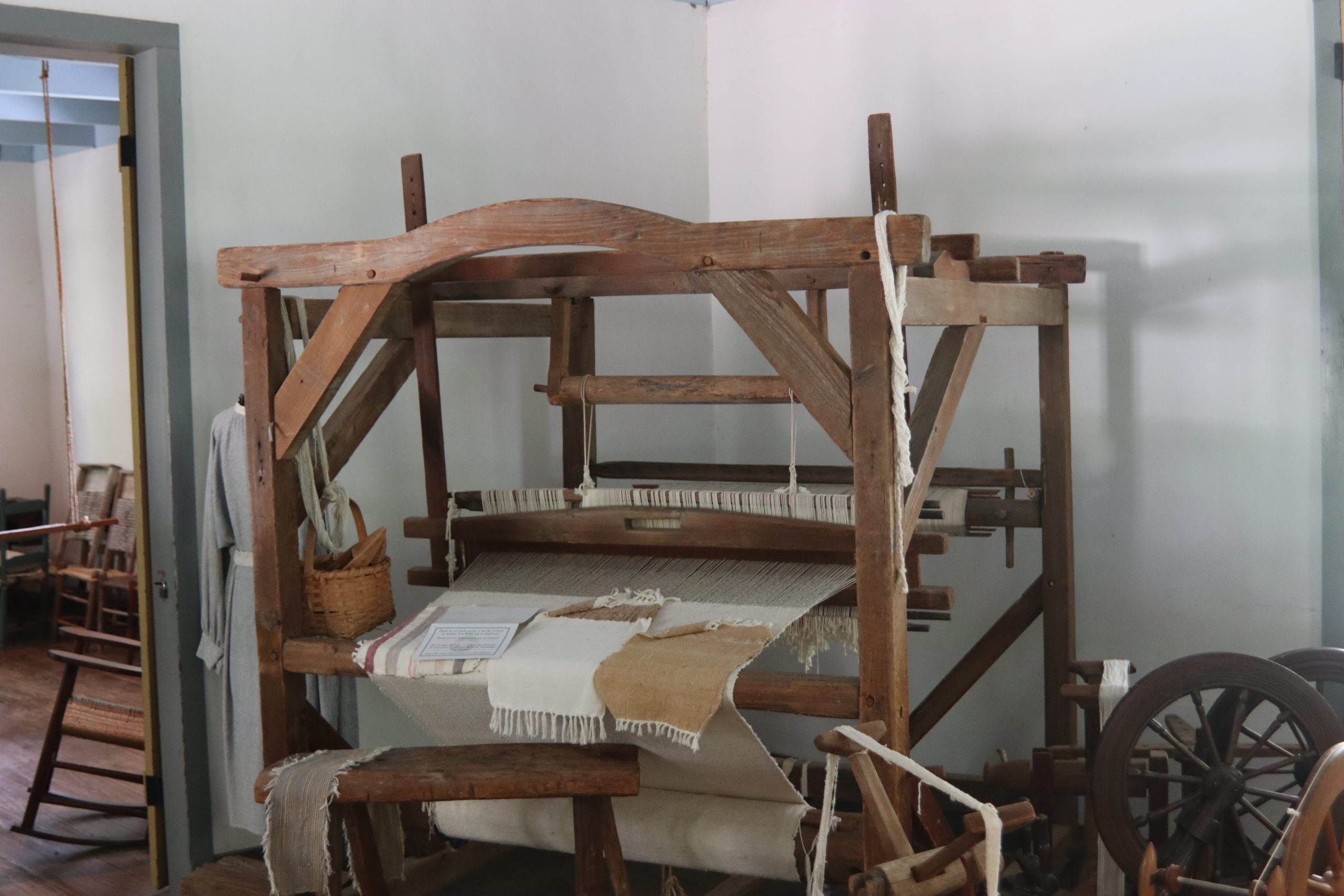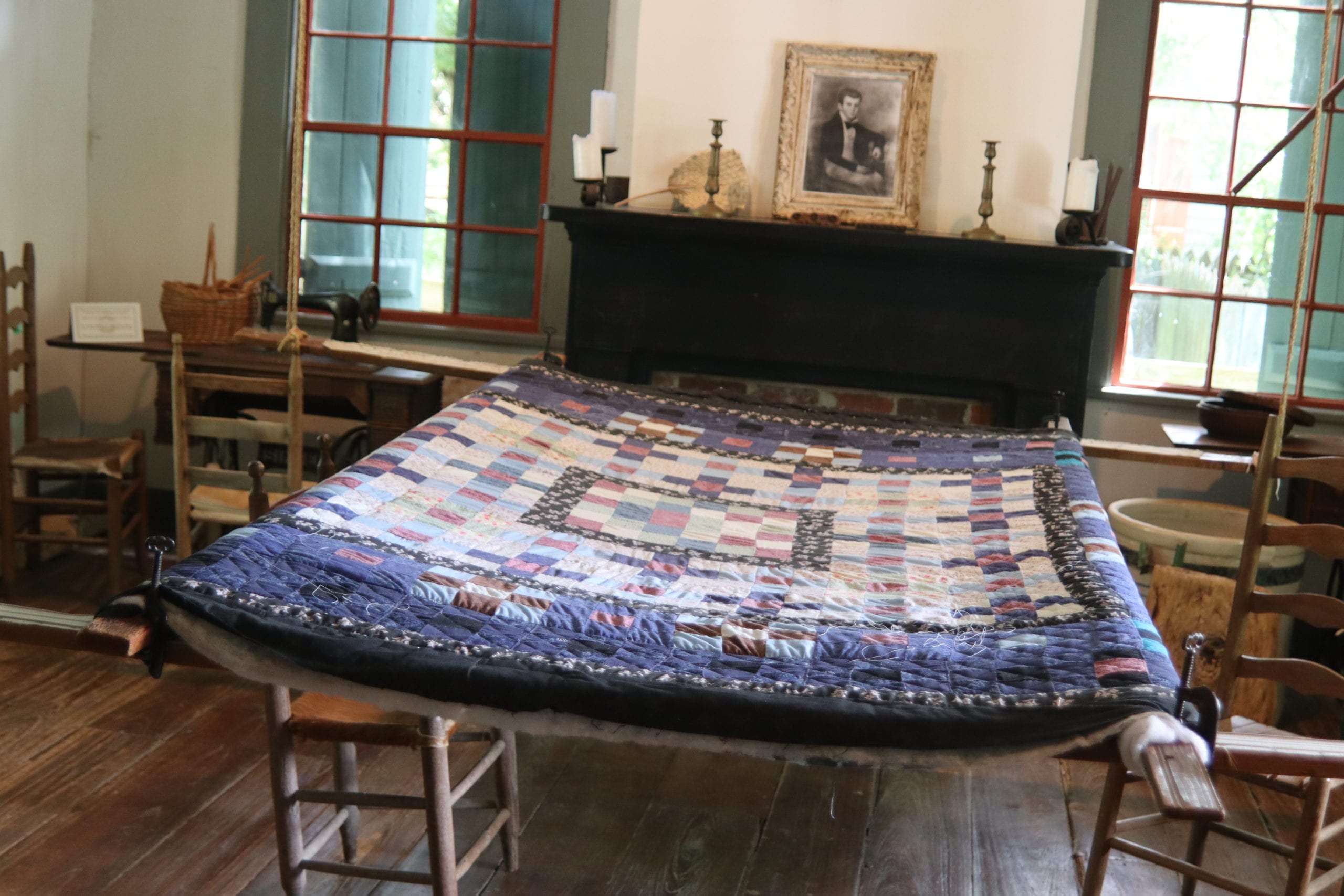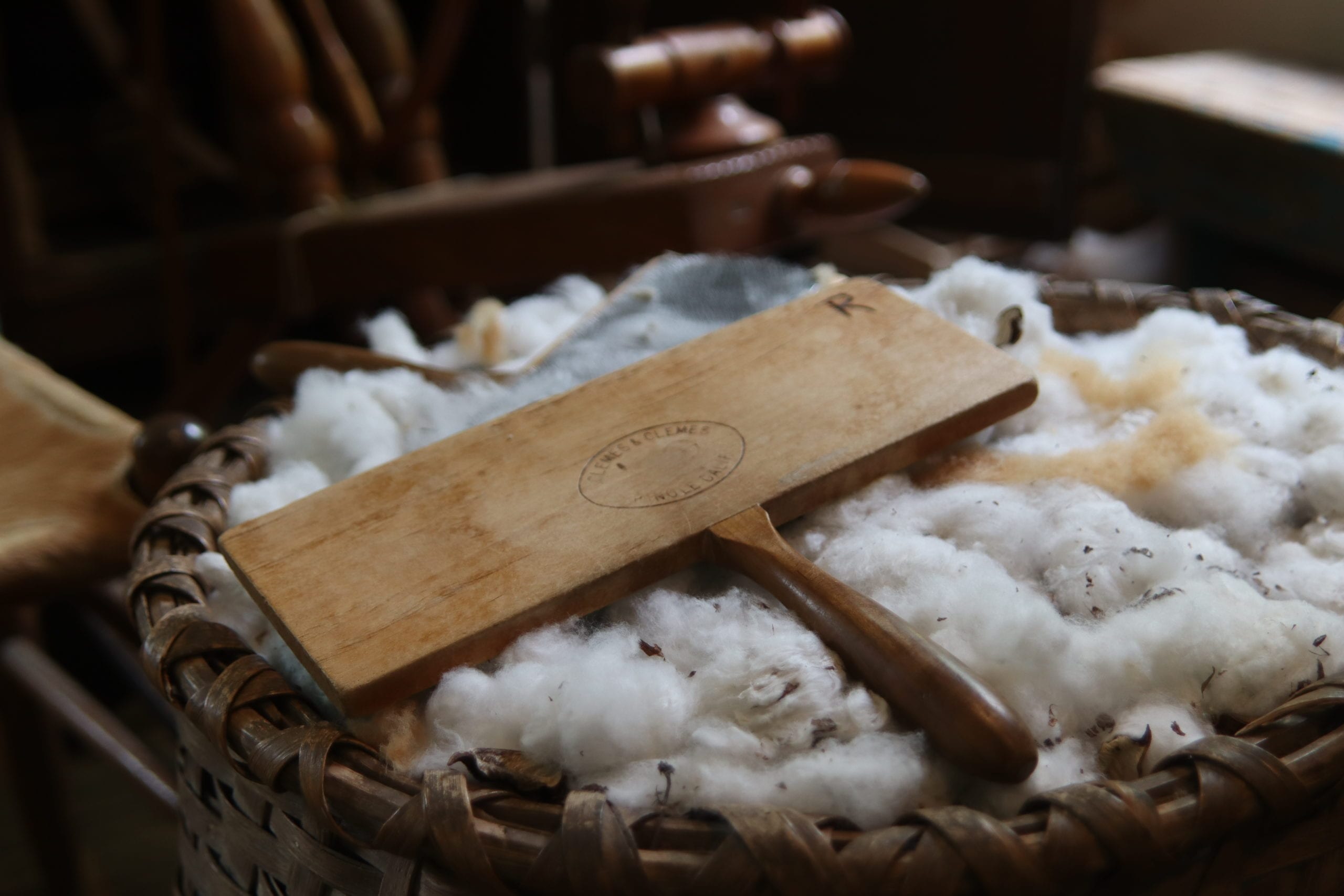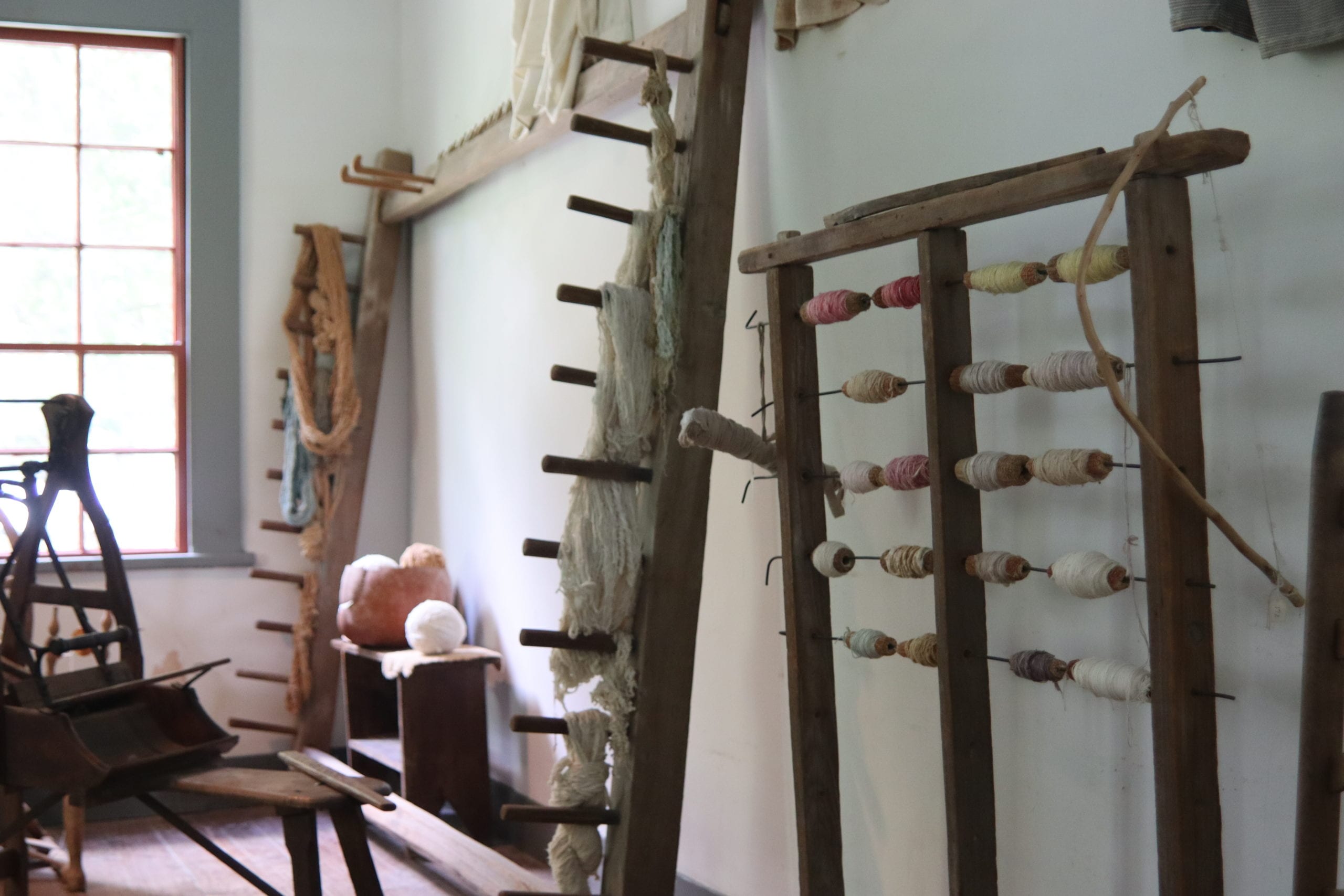
Built around 1840, Beau Bassin represents some of the various textile crafts that were vital during Vermilionville’s time. In this house you can see the spinning wheels used to spin the raw cotton fibers into yarn, the loom to turn those yarns into fabric, and a large frame used to create quilts from remnants of fabrics no longer useable as clothing.

This loom is over 400 years old (and it still works!) Like many pieces built during that time, you’ll see that there is very little metal used on this loom. All of the heavy wood pieces would have been milled by hand, and are held together with wooden pegs. Looms like this would have been a common sight in the home, and would have been responsible for creating fabric for generations of the people in Acadiana.

Clothes were often worn until they could no longer be repaired or altered to fit someone younger. Once only patches of fabrics remained, these would be re-worked and re-purposed into quilts that you’ll see in this room. Quilt racks like these were often suspended from the ceiling, and children would often play beneath, careful not to get to close to a needle poking through. In Vermilionville’s time period, quilts were often stuffed with feathers or Spanish Moss from nearby trees.

Carders like these were used to prepare the cotton for spinning. Used as a pair, the small pins on the face of the tools would align the fibers of the cotton, lining them up into rovings, which would then be spun into yarns and threads for weaving on the loom.

